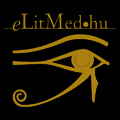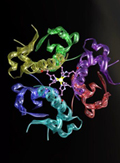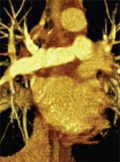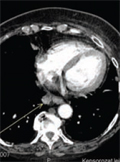The eLitMed.hu medical portal uses computer cookies for convenient operation. Detailed information can be found in the Cookie-policy.
Lege Artis Medicinae - 2011;21(04)
Content
[Cardiovascular risk of non-steroidal antiinflammatory drugs]
[During the past decade, a number of original publications, reviews and metaanalyses were published on the cardiovascular safety of nonsteroidal antiinflammatory drugs (NSAIDs). As this group of medicines is among the most frequently used ones and many preparations are available over the counter, it seems to be prudent to summarise the most important results on the safety of these drugs, and underline their potentially harmful cardiovascular side effects. Nevertheless, it can also be emphasized that there are substantial differences between different compounds, and the cardiovascular risk does not depend on the ratio of COX-1/COX-2 selectivity. Cardiovascular risk can be increased by all NSAIDs with the possible exception of naproxen.]
[IgG4-related disease]
[IgG-4-related disease is a clinical entity characterised by significant elevation in serum IgG-4 levels, infiltration of IgG-4+ plasma cells into the involved tissues, enhanced fibrosis, and good therapeutic response to corticosteroids. The IgG-4 associated disease mostly affects two organs. The salivary and lacrimal gland enlargement and inflammation is known as Mikulicz’s disease, which had been previously known as a subtype of Sjögren’s syndrome for a long time. The other commonly involved organ is the pancreas, in which a special form of chronic pancreatitis, namely autoimmune pancreatitis develops. IgG-4 associated disease as a separate disease has been suggested by Japanese authors. Previously published data support the common pathogenesis of autoimmune pancreatitis and Mikulicz’s disease. Besides these two manifestations, similar histological lesions and elevated IgG-4 levels have been demonstrated in many other organs. At present, it is not clearly demonstrated whether IgG-4 syndrome is an autoimmune disorder, and we do not know the exact reason of the elevated IgG-4 levels in patients with this syndrome. IgG-4 is a regulatory immunoglobulin, the main function of which is to decelerate immune responses, thus its pathologic role in tissue destruction is difficult to explain. It is not clear either, whether IgG-4 syndrome is indeed a single disease, or only an example of overlapping symptoms of various diseases. On the basis of the characteristic histological lesions in various organs, IgG-4 syndrome is similar to multi-organ diseases, such as sarcoidosis or vasculitis.]
[Diagnosis and therapy of cerebrovascular diseases - Retrospection to the efforts for managing patients with stroke in the last two decades in Hungary]
[The first Hungarian guideline regarding management of stroke patients has been published in 1990 (LAM). In the past 21 years, clinical practice in stroke care has improved significantly in Hungary and is currently performed according to evidencebased protocols issued by international and national consensus meetings. Currently the EUSI guideline published in 2008 and the management protocol written in the same year by the board of the Hungarian Stroke Society are followed. The most important changes of the past 20 years in stroke management have been the following: the priority concept and lysis therapy have become common in daily practice, emergency examination has been performed in selected TIA cases and an up-to-date practice has been established in stroke prevention. The increasing number of lysis therapy each year demonstrates an improving organisation of stroke care and improving professional preparedness. In selected stroke centres, all the modern technical facilities are available, on the other hand, substantial development is needed in a number of stroke units. A national stroke registry and quality control are warranted for further professional development in Hungary.]
[Halogen addition and steroid effect]
[Among locally administered anti-inflammatory drugs used in dermatology, steroids are among the most commonly applied ones. In everyday practice, choosing the right local steroid preparation is not easy, since more than 50 different local steroid preparations with at least 30 different active ingredients are available. The choice of the local steroid preparation depends on a number of aspescts. It is recommended to apply local steroid preparations that, besides having a strong effect, also have favourable side effect profiles. Moreover, it is subservient to apply local steroids that penetrate deeply into the skin, but have minimal systemic absorption, therefore do not inhibit significantly the hypothalamicpituitary- adrenal axis if administered locally. These characteristics of local steroid preparations are determined by chemical modifications at various positions on the steroid-frame. In this study, we examined the different types of chemical modifications, and the relationship between halogen addition and the characteristics of steroid preparations. We compared the local steroid preparations using the data of previous clinical trials. Regarding the efficacy, safety, tolerability and the risk/benefit ratio, the halogenated steroid preparations were overall superior to nonhalogeneted ones. Among the halogenated preparations, the fluticasone propionate, the mometasone furoate and clobetasol propionate were proved to be the most suitable locally administered, very potent or super potent ones.]
[Metformin - but what else is in the box?]
[Metformin is currentlly the most commonly prescribed oral antidiabetic drug for the treatment of patients with type 2 diabetes mellitus. Its administration is limited by the contraindications and the possible gastrointestinal side effects. In Hungary, metformin is currently available in numerous forms, among which the extended-release tablets are distinguished because of their tolerability. The authors summarise the most recent data about the favourable features of metformin, help clinicians to choose the appropriate preparation of metformin, and highlight the administration procedures that help to avoid gastrointestinal side effects.]
[Diagnosis of diabetes mellitus, treatment and care of diabetic patients in the adulthood - Novelties in the position statement of the Hungarian Diabetes Association, 2011]
[The position statement of the Hungarian Diabetes Association has been renewed in 2011. The new version of the position statement, comparing to that of the formerly published one in 2009, implies some new data which are currently reviewed. Besides target value of antidiabetic treatment the importance of the target range is emphasized. Details about the monogenic forms of diabetes and the role of the continuous glucose monitoring system are discussed. A treatment algorithm for type 2 diabetes is published and the use of newly available antidiabetic drugs is summarized. Finally, the importance of the early diagnosis and the prevention of diabetes mellitus are pointed out.]
1.
Clinical Neuroscience
Is there any difference in mortality rates of atrial fibrillation detected before or after ischemic stroke?2.
Clinical Neuroscience
Factors influencing the level of stigma in Parkinson’s disease in western Turkey3.
Clinical Neuroscience
Neuropathic pain and mood disorders in earthquake survivors with peripheral nerve injuries4.
Journal of Nursing Theory and Practice
[Correlations of Sarcopenia, Frailty, Falls and Social Isolation – A Literature Review in the Light of Swedish Statistics]5.
Clinical Neuroscience
[Comparison of pain intensity measurements among patients with low-back pain]1.
Clinical Neuroscience Proceedings
[A Magyar Stroke Társaság XVIII. Kongresszusa és a Magyar Neuroszonológiai Társaság XV. Konferenciája. Absztraktfüzet]2.
3.
Journal of Nursing Theory and Practice
[A selection of the entries submitted to the literary contest "Honorable mission: the joys and challenges of our profession" ]4.
Journal of Nursing Theory and Practice
[End of Life and Palliative Care of Newborns in the Nursing Context]5.
Journal of Nursing Theory and Practice
[Aspects of Occupational Health Nursing for Incurable Patients ]












